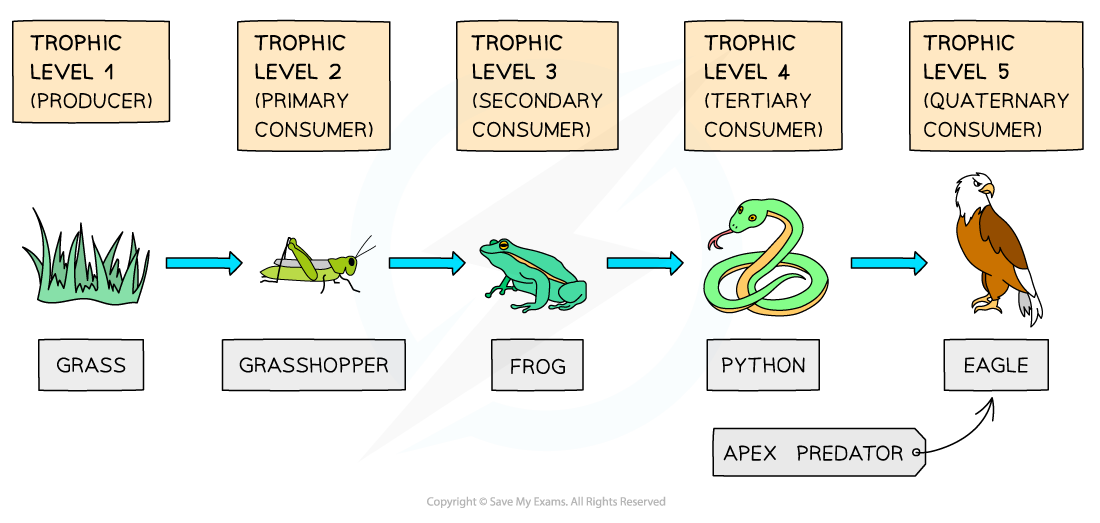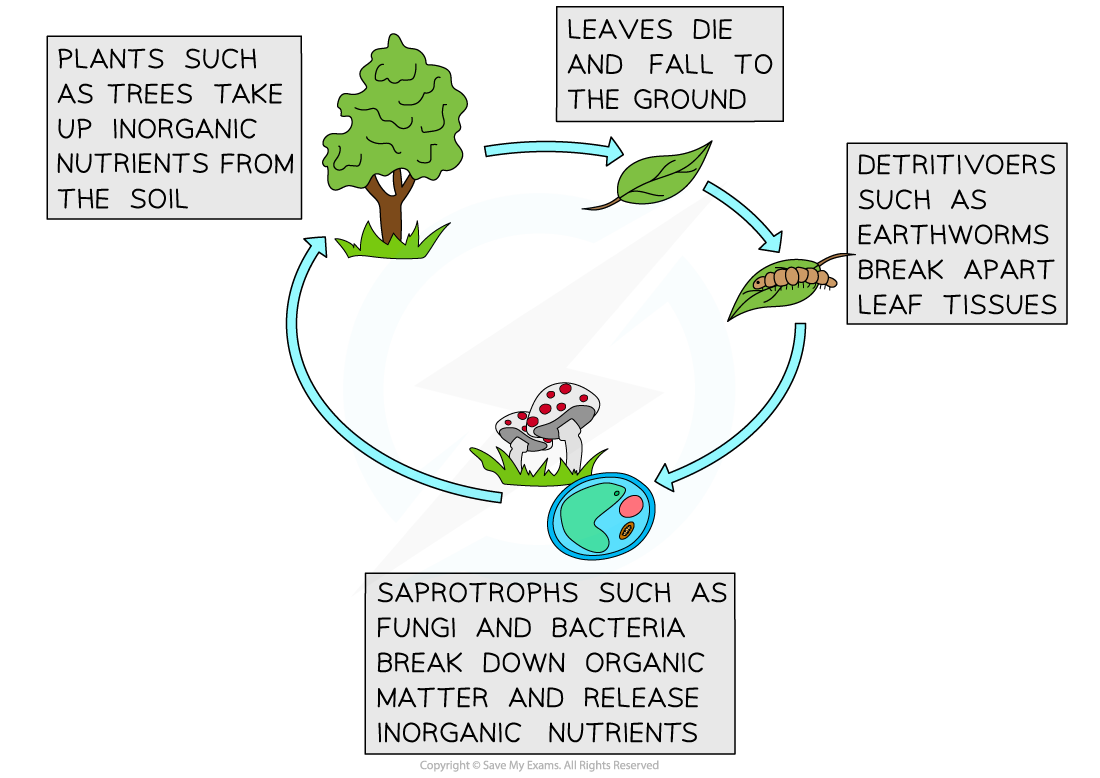Obtaining Inorganic Nutrients
- The individual organisms in an ecosystem need organic molecules to build their cells and tissues
- These molecules contain carbon, hydrogen, oxygen, nitrogen, and phosphorus, as well as other elements
- Because these elements are present in the abiotic environment (such as the air and soil) in the form of inorganic compounds or nutrients, ecosystems depend on producers to transfer them into the food chain
- Producers are autotrophs, producing organic molecules from inorganic carbon via photosynthesis
- In terrestrial (land-based) ecosystems, plants use CO2 from the air
- In aquatic (water-based) ecosystems, plants use CO2 dissolved in the water
- Producers are autotrophs, producing organic molecules from inorganic carbon via photosynthesis
- Plants are also able to absorb inorganic nutrients such as nitrates and phosphates from the soil, incorporating them into organic molecules in their tissues as they grow
- Primary consumers feed on producers, digesting their tissues and absorbing the organic molecules via their digestive system
- Secondary consumers feed on primary consumers, and so on

The inorganic nutrients originally obtained by the producer from the abiotic environment are transferred to other organisms in the community via food chains
Nutrient Cycling
- When inorganic nutrients enter the food chain, they are converted into organic molecules and are locked up inside the tissues of living plants and animals
- Because the supply of inorganic nutrients is finite, it is essential that when these organisms die the nutrients locked up in their tissues are released
- The organic molecules need to be converted back into inorganic nutrients that can be used by producers
- The process of breaking down the bodies of dead organisms and the waste products of living organisms is known as decomposition, and it enables the cycling of nutrients
- Detritivores often begin the process of decomposition by breaking apart tissues
- Saprotrophs release enzymes that break down the organic molecules in the tissues, releasing inorganic nutrients
- While saprotrophs absorb some of these nutrients themselves, what is left in the soil becomes available for producers

The cycling of nutrients in an ecosystem
Exam Tip
Remember that while an ecosystem's supply of inorganic nutrients is finite, the supply of energy from sunlight, although it may vary depending on weather conditions, is usually continuous.The concept of nutrient cycling discussed here is separate to the concept of energy flow covered elsewhere; the two ideas should not be confused with each other.
Sustainability of Ecosystems
- In a functioning ecosystem, the elements that living organisms need are constantly recycled
- Producers access inorganic nutrients from the abiotic environment and convert them into organic molecules
- Consumers gain organic nutrients from ingesting the tissues of producers and other consumers
- Detritivores and saprotrophs break down the organic molecules in dead tissues and waste matter, making them available again to producers
- Provided that the conditions are right and this cycling process continues, ecosystems can be sustainable over long periods of time
- If nutrient cycling stops then an ecosystem can only be productive until the finite supply of inorganic nutrients runs out
- Without the process of decomposition, nutrients remain locked up in dead tissues and cannot re-enter the food chain
- Nutrient cycling might stop if environmental conditions become unsuitable for decomposition
- Climate change might cause an ecosystem to become too dry for saprotrophs to survive
- Harvesting or deforestation removes organic matter from the environment and leaves nothing for saprotrophs to digest, meaning that the nutrients contained within this organic matter are not recycled back into the ecosystem and are instead completely removed from the ecosystem
